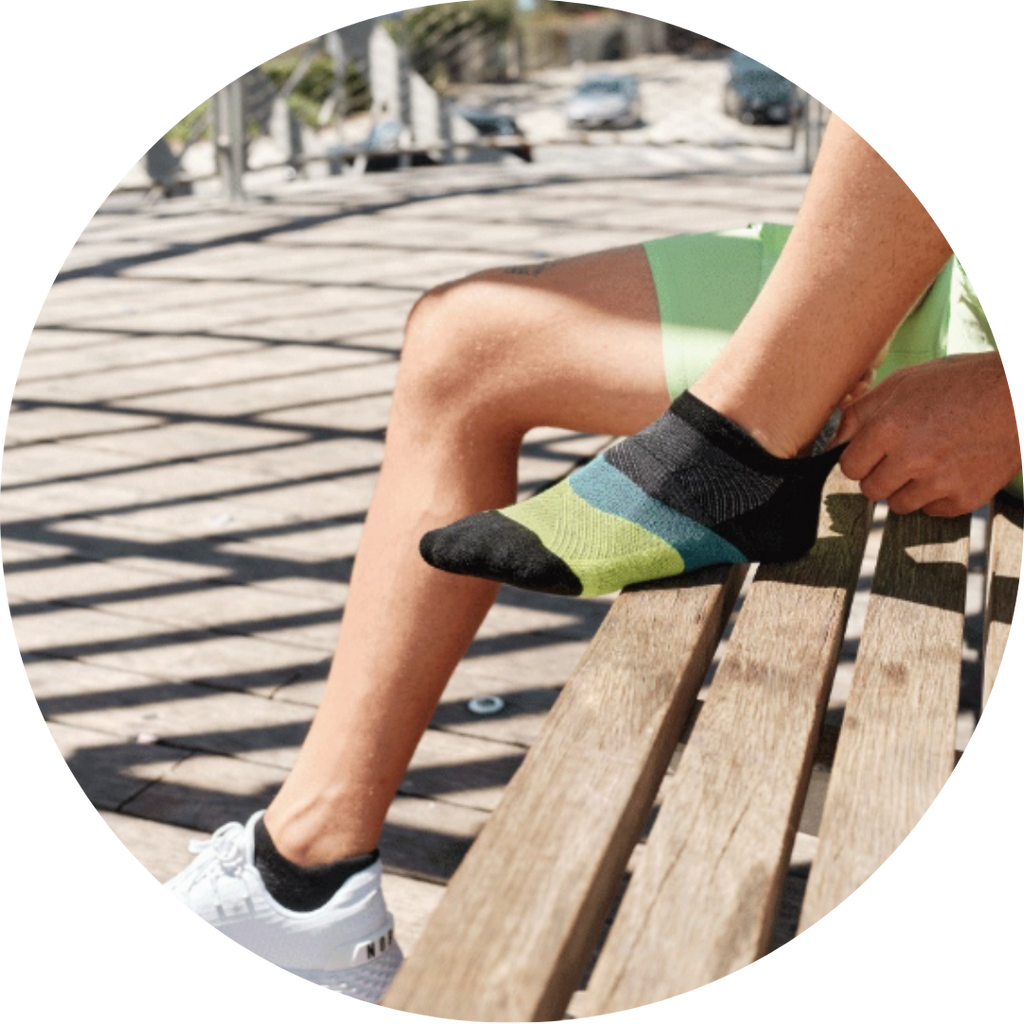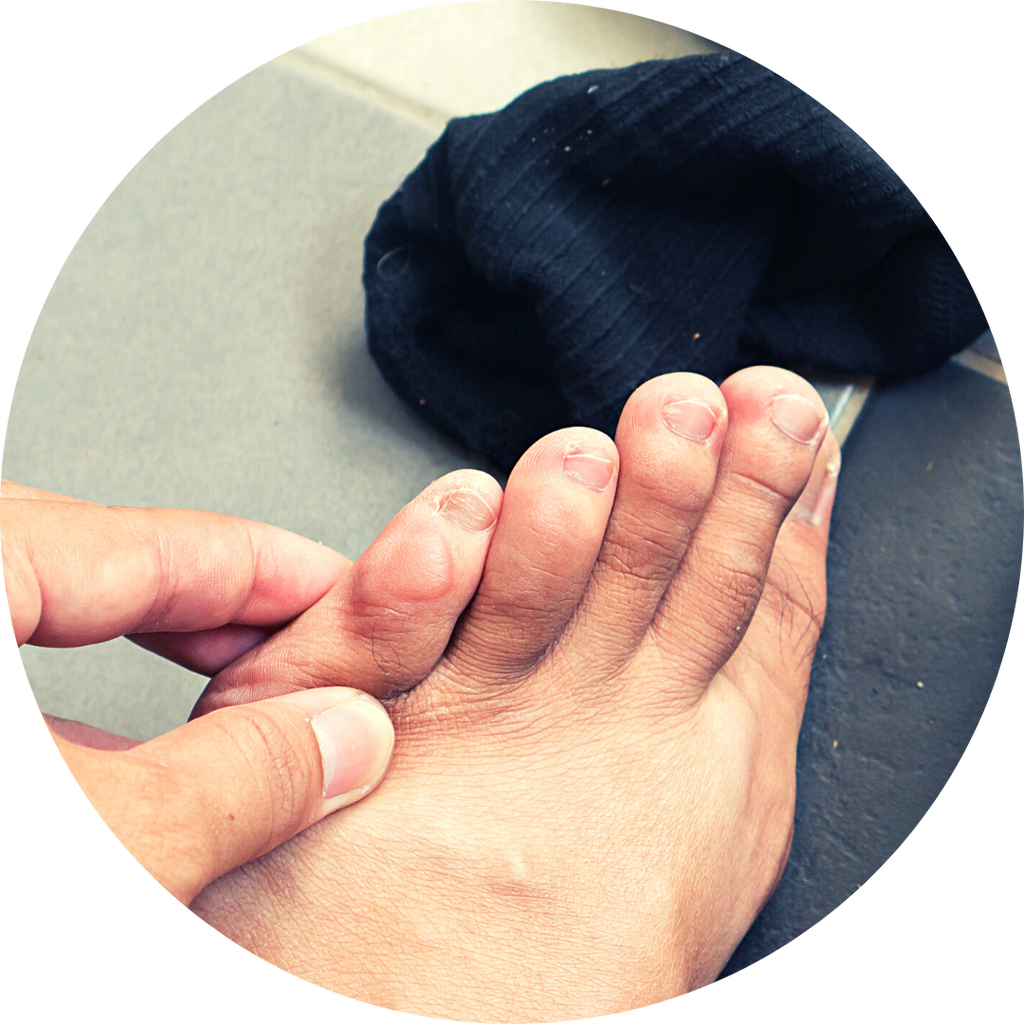Ready to race!
How to prepare your shoes to race!
You’re only a few weeks out from your next big race. You’re preparing your body with careful and considered training. You’re fuelling and prepping with the best possible sustenance. You’re stretching and easing out those aches and pains to ensure no niggles hold you back on the day. You’re giving yourself the best possible chance for great outcomes come race day – But you’ve forgotten one essential component. What’s carrying you across that finish line? Your shoes! It may sound obvious, but many runners make the mistake of not testing, wearing in or selecting the right shoes for the physical challenge to come.

Your footwear is what will make or break your race day, and your race prep. It is crucial you are wearing shoes fitted specifically for you! Your feet are as unique as your fingerprint. What works for one runner won’t necessarily be right for you. The key to finding the best fit for you, is understanding your individual biomechanics. Each runner will have different requirements depending on level of fitness and the distance they are running.
The podiatric trained team at Active Feet can analyse your gait, running/walking speed and analyse the cushioning and support you need to suit your biomechanical function. We can prescribe the right shoes for you. Some runners are genetically blessed with efficient biomechanics and can run comfortably for long distances in lightweight shoes with little cushioning. Some will require more motion control or support. Others have been buying the same shoe for decades!
As a rule, you should aim to be training in a well fitted, cushioned shoe to support and absorb the repetitive force of training. Introduce your lightweight race shoes closer to race day (4-6 weeks out), for shorter distances to get your body accustomed to the change in support, weight and cushioning. We encourage the 80/20 rule when training for an event to ensure you are not relying on the one pair. This rule requires two pairs of shoes; one worn 80% of the time and the other 20%. This rule ensures you are not wearing out your shoes and potentially causing injury by wearing shoes that are no longer supportive and responsive enough.
It is important to wear your event day shoes 20% of the time to condition your body to the lighter weight. And for the more obvious reason, that if you don’t wear your shoes before an event you open yourself up to the risk of blisters and pain. Employing the 80/20 rule gives you the best chances of performing at your best.
New shoes will need to be fitted 4-6 weeks before the event so that you have time to break them in. It can be a good idea to introduce a second shoe and alternate between pairs. Shoe rotation has many benefits.
Your top Lightweight shoe questions answered!
Whether you are a pro or an enthusiast – knowing which shoes to wear when and why can be very confusing! As we welcome the warmer weather, we also usher in the running event season. And there’s never been a better time to decode the mystery that is – the lightweight running shoe. We spoke to Damien, our Prahran store manager and keen runner, for his best lightweight and race shoe tips!
Why would I need specific lightweight shoes?
Lightweight shoes are great to have in your rotation not just for race day, but also for more specific speed sessions. They provide a lighter and more responsive feel which is great for when you’re trying to hit your next PB!
At what point in my training before a marathon/ long distance event should I start wearing them to train?
As soon as you get them. It’s great to wear them in before any major event, but wearing them in your training first can also provide more benefits. You will get used to the feel of the shoe, which is important to experience before a big race, and it will mix up the input signals through your muscles and help to develop strength in your feet and legs, reducing your risk of injury in the process.
I’m running a 5/10km event, do I need lightweight race shoes?
While it’s not crucial to have a lightweight shoe for race day I would personally recommend it as I feel there are more benefits than harm. As mentioned the lighter weight and greater responsive feel to the shoe make a real difference when running faster. Find what is right for you, not every race shoe will be perfect for every distance and not every person will feel the same way in any one shoe.
When would you advise against lightweight shoes?
I wouldn’t recommend using your lightweight shoes for every run, try to keep them for a specific time in your training. Whether that’s just for race day or even just specific sessions. I personally will have certain shoes that I try to wear for different sessions, eg. For a tempo/threshold run I have a pair that I wear and then for reps on a track I have a different pair. (Talk to staff about what the best option for your training would be and the types of sessions/training runs you are doing.)
What is the difference between a lightweight and an event/ race shoe?
The type of run/session that you will be doing in the shoe.
As mentioned some shoes are better for a longer session like a threshold run as they have a bit more volume and cushion to them while some shoes are made to be light and fast, but don’t offer as much padding or protection from the ground.
Is there a good mid-way point if I think I might need more support?
Yes. While some of the lightweight shoes that we stock will offer a bit of support sometimes it still may not be enough for what your foot needs. Sometimes going into a different full volume shoe that has less posting and less weight can be a good compromise or even an entry point if you have never worn a race shoe before.
Marathon Tips: from Osteo Dr. Laura Pearce
Laura is the owner and founder of Back Into Osteopathy and head Osteopath. Laura is a keen athlete herself as a triathlete in which she incorporates Strength & Conditioning principles to further increase speed, strength & power. With this knowledge and background, Laura has developed a passion for managing sporting injuries as well as educating and rehabilitating postural issues. She is proud of her understanding of the human anatomy and biomechanics and uses this knowledge to seek the cause of the initial complaint. Laura’s holistic healthy-lifestyle approach to treatment and management seeks to achieve long-term results for her patients.

It is no secret that running a marathon places a huge amount of strain on our bodies. Training, preparing and listening to your body is key in ensuring you get to the end of your 42km in one piece - mentally and physically! We asked our expert - Osteopath Dr Laura Pearce for her top tips!
Marathons are extremely tough and exhausting on the body. You are putting yourself through metabolic fatigue (energy stores), environmental fatigue (climate), neurological (motor drive/motivation) and psychological fatigue (stress). Due to this, you must be well prepared in your training, the event day itself and your recovery process to get ready for whatever you have next.
In order to improve your performance and outcomes, you must overload your body for the adaptations and improvements to occur. The recovery phase in this must be a huge focus as well in order to prevent over-training and fatigue. This includes rest, nutrition and of course hydration. Know how much your body can take and gradually increase the load with rest allowing for these adaptations to occur. These are your running sets as well as strength and conditioning sets, which are imperative to your speed and power.
De-loading before race day is essential. Smaller and slower runs are fine as well as massage or other physical therapy prior are great for releasing the muscles pre-race. This also includes foam rolling and mobility exercises. Start fuelling your body 48-hours before the race. This includes a high carbohydrate diet to store this in your muscles ready for use. For the morning of the race, make sure you eat at least 2.5hrs to 3hrs before the race as well as being prepared with fluids including a water and an electrolyte mix to assist with rehydrating fluids and electrolytes.
Post-race, have a high-GI sugary snack within the first 30 minutes. Then a protein, low GI meal 1-2 hours afterwards. If possible, a slow but active recovery can help your muscles recovery. This could include a walk around the finish line or even a light jog to your mode of transport. And always allow rest for your body to restore all four fatigued systems and for adaptations to occur.
Good luck for your race day!
The Active Feet Difference
At Active Feet we are about more than just shoes – we are about complete footwear solutions. Our highly-trained team provide FREE in store industry leading video gate-analysis, so you can be sure you are fitted in the right shoe for you. We offer a wide range of the best brands at competitive prices. Including orthotic friendly, sports specific, varied widths, specialty styles and accessories.
The Active Feet Difference
At Active Feet we are about more than just shoes – we are about complete footwear solutions. Our highly-trained team provide FREE in store industry leading video gate-analysis, so you can be sure you are fitted in the right shoe for you. We offer a wide range of the best brands at competitive prices. Including orthotic friendly, sports specific, varied widths, specialty styles and accessories.


